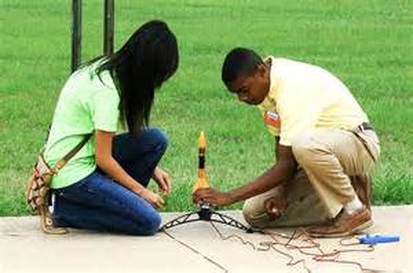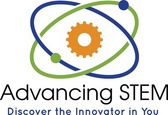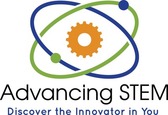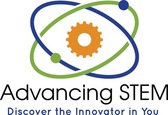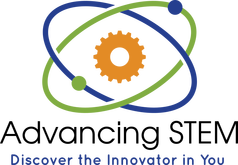AdvancingSTEM is a K-5 complete STEM curriculum for the NGSS/NYS P-12 Science Learning Standards classroom.
|
For almost 30 years, districts in our state have relied on BOCES to provide instructional materials kits for elementary teachers to use in teaching hands-on science lessons. As the NYS Science Learning Standards have been rolled out to meet the challenges of the Next Generation Science Standards, our science kit programs needed to change, too.
Designed by teachers in Allegany, Cattaraugus, Chautauqua, and Erie Counties, our STEM Kits provide hands-on science curriculum and activities for grades K-5. Three dimensional teaching and a cohesive lesson planning structure are foundational across all manuals. |
Three Dimensional Teaching
I think that the materials that are provided are great and really align with the standards. |
The Next Generation Science Standards (NGSS), upon which the NGSS/NYS P-12 Science Learning Standards are built, incorporate three dimensions of knowledge, skills, and practices. They are:
Dimension 1: Science and Engineering Practices This dimension focuses on students emulating the behaviors of scientists and engineers. The focus isn’t just on skills, but on the incorporation of knowledge. These practices include building models and developing theories about the natural world. Dimension 2: Cross-Cutting Concepts This dimension incorporates knowledge that spans science and engineering fields, linking ideas from one area of science to another. The focus of this dimension is on explicitly teaching the concepts of: Patterns, similarity, and diversity; Cause and effect; Scale, proportion and quantity; Systems and system models; Energy and matter; Structure and function; Stability and change Dimension 3: Disciplinary Core Ideas The disciplinary core ideas are grouped into four domains: life sciences; physical sciences; earth and space sciences; and engineering, technology and applications of science. To be considered core, ideas should meet at least 2 of the following criteria:
True NGSS-aligned instruction happens when teachers are able--through well-designed instructional practices and approaches--to merge these three dimensions into in-depth understanding for students. |
Curriculum Design and the 5 E's
|
Units are designed based on the 5E Lesson Planning structure. The 5E’s provide a framework for curriculum, unit, and individual lesson design in the sciences.
Engage The engage lesson(s) initiates the learning tasks. The activities (1) activate prior knowledge and make connections between past and present learning experiences, and (2) anticipate activities and focus students’ thinking on the learning outcomes of current activities. The learner should become mentally engaged in the concepts, practices, abilities, and skills of the curriculum unit. Explore The explore lesson(s) provides students with a common base of experiences within which they identify and begin developing concepts, practices, abilities, and skills. Students actively explore the contextual situation through investigations, reading, web searches, and discourse with peers. Explain The explain lesson(s) focuses on developing an explanation for the activities and situations students have been exploring. They verbalize their understanding of the concepts and practices. The teacher introduces formal labels, definitions, and explanations for concepts, practices, skills, and abilities. Elaborate The elaborate lesson(s) extend students’ conceptual understanding through opportunities for students to apply knowledge, skills, and abilities. Through new experiences, the learners transfer what they have learned and develop broader and deeper understanding of concepts about the contextual situation and refine their skills and abilities. Evaluate The evaluate lesson(s) emphasizes students assessing their understanding and abilities and provides opportunities for teachers to evaluate students’ understanding of concepts and development of goals identified in learning outcomes. |
Engineering Design Process
|
Most units culminate with an engineering design challenge or project. Students will be guided through the Engineering Design Process in order to complete these assessments.
Ask: explore problems During this phase students are using questions to explore a problem or a task. Through questioning, students explore the details of a problem or task so that solutions are explored in a meaningful way. Questions to ask could be: What is the problem? What is affected because of this problem? When is this problem most apparent? Imagine: brainstorm solutions This phase provides students with an opportunity imagine what solutions to the problem might look like. Students might list ideas, share conversations, or dialog in ways to think of possible solutions to problems or tasks. Plan: design a solution During this phase students determine the best approach to a solution and begin to take steps toward actualizing their approach. Students might create a drawing, list needed materials, and focus on the details needed just before creating a prototype. Create: build a prototype Students implement their plan. They may build a physical object, develop a presentation, or carry out a task that was planned in the previous phase. Improve: make it better Students use this phase to hone their work. After they have built a prototype or implemented a solution, students are led through an assessment of their approach and provided with opportunity to improve their solution. |
More Curriculum Details
Excellent collections of resources already gathered. - Norm Glover, Portville Central School |
Throughout units, lessons have been designed to engage students and allow opportunities for exploration of topics and concepts, provide pausing points for teachers to explain and elaborate, and to evaluate the knowledge and application of the crosscutting concepts, disciplinary core ideas, and science and engineering practices.
Lesson Details Each unit begins with an inquiry question, a list of concepts covered, and a description of the culminating assessment. A unit may range from 15-20 learning experiences, and is intended to be taught over the course of 4-6 weeks. A typical learning experience may last between 25-40 minutes. Assessments Formative assessments have been embedded throughout units. Units culminate with either an assessment utilizing the Engineering Design Process or a performance based task. Scoring rubrics have been designed and embedded within units to aid in the evaluation process. Live Materials Any life science based unit includes instructions for accessing and/or ordering live materials. Scientist’s Notebook To help students track their understanding and growth, students are provided with a scientist’s notebook. This is a collection of all of their worksheets, a glossary for their vocabulary, and a place for them to keep notes and/or observations. Digital Resources Throughout the curriculum, teachers will notice links and references to digital resources. These may include videos, apps, and/or websites. Vocabulary Vocabulary development and instruction are key components to high-quality science instruction and student achievement. As such, we highly encourage the use of explicit and direct instructional techniques when it comes to introducing and mastering key vocabulary terms within the science concepts and units. Included in the Scientist’s Notebook is a glossary for students to document their new vocabulary, using the Frayer Model. The Frayer Model asks students to create a visual model of their learning by defining the target word and determining examples and non-examples. More information on the Frayer Model can be found at: http://www.theteachertoolkit.com/index.php/tool/frayer-model |
